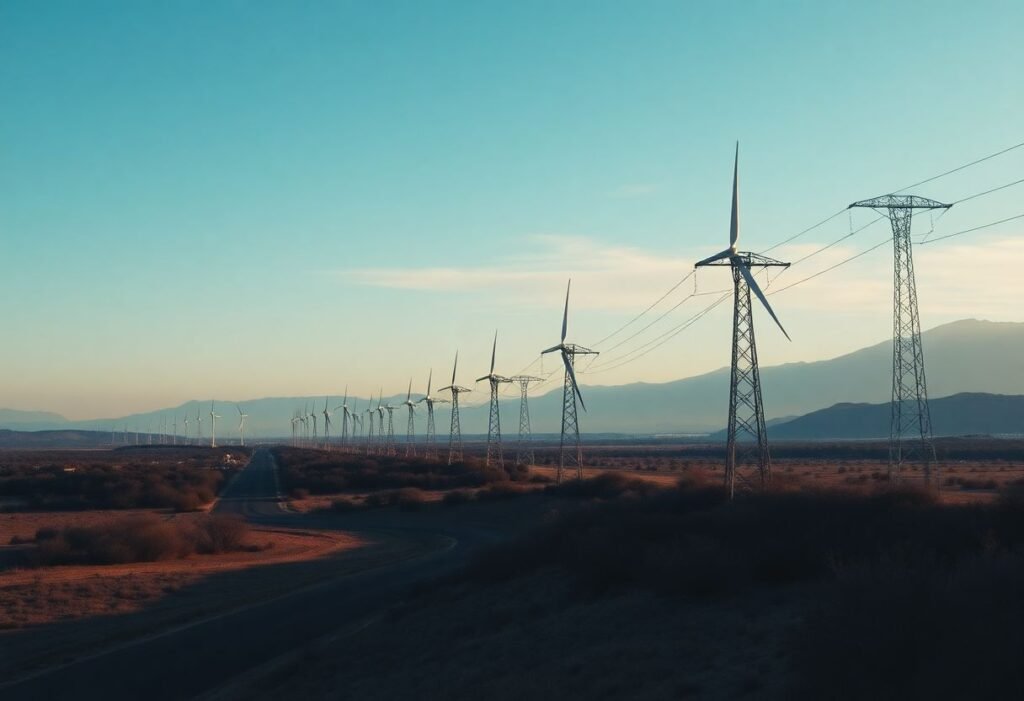The integration of wind energy into our power grids represents a pivotal innovation in enhancing grid stability. As countries around the world seek sustainable alternatives to traditional energy sources, wind energy provides a viable solution. This article delves into how wind energy technology is not just a cleaner option, but also a cornerstone for maintaining a balanced power supply.
Wind Energy Technology Drive
Wind energy technology has advanced significantly over the past few decades. Innovations in turbine design and efficiency have enabled wind farms to operate at optimal capacity, even in variable weather conditions. Modern turbines can generate energy even at lower wind speeds thanks to improved blade designs and materials. This means that countries can harness more energy from wind, contributing to overall grid stability. Additionally, the scalability of wind farms allows for strategic placements, further enhancing their effectiveness in maintaining stable energy outputs.
Challenges in Wind Energy Integration
Despite its advantages, the integration of wind energy into existing grids presents unique challenges. Wind power is inherently intermittent, which can cause fluctuations in the energy supply. To address this, grid operators must implement advanced management systems and storage solutions that can balance these variations. Battery storage systems and other technologies must be developed to ensure that excess energy generated during peak wind periods can be stored and utilized when demand rises.
Smart Grid Innovations
The evolution of smart grids plays a crucial role in enhancing grid stability with wind energy. These grids utilize advanced communication technologies that allow for real-time monitoring and management of energy distribution. By integrating data analytics and AI, grid operators can predict demand and adjust energy flow accordingly. This approach minimizes waste and maximizes efficiency, ultimately leading to a more reliable grid. Smart grid technologies are critical in enabling a seamless transition to renewable energy sources, including wind.
Regulatory Support for Wind Projects
Regulatory frameworks significantly influence the successful integration of wind energy into power grids. Many governments are now offering incentives for renewable energy projects, ensuring proper funding and support for the expansion of wind farms. Policies that promote research and development in wind energy can accelerate innovation, leading to breakthroughs that further enhance grid stability. By creating a conducive environment for investments in wind technology, regulators can help transition towards more sustainable energy solutions.
The Future of Wind Energy
Looking ahead, the future of wind energy appears promising. Ongoing research into offshore wind farms and advanced turbine technologies suggests that the potential for expanding wind energy’s contribution to grid stability is immense. Investments in innovative solutions, such as floating wind farms, are poised to unlock untapped resources. These advancements not only enhance grid resilience but also contribute to global efforts in combating climate change. The transition to wind energy is a crucial aspect of achieving a sustainable energy future.
Conclusion and Importance of Innovation
In conclusion, the role of wind energy in enhancing grid stability cannot be overstated. It represents not just an environmental win but also an innovation-driven solution to modern energy demands. As technological advancements continue to evolve, the potential for wind energy to contribute to a reliable, cleaner energy grid only increases. Stakeholders in the energy sector must prioritize research, policy, and infrastructure developments to fully realize these benefits.
Disclaimer: The information provided in this article is for educational purposes only and should not be considered financial or professional advice.





















